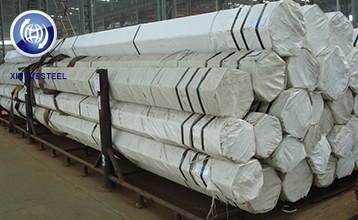The word "Limit" takes the lead, and the steel market ushered in phased adjustments
Oct. 15, 2021
Since mid-September, the rapid rise of steel prices has been hindered, and the market has seen a high fall. The strong double coke (coking coal, coke) futures prices continued to plummet, with a single-day drop of up to 7%, close to the limit, and finally fell below the 2,700 yuan/ton and 3300 yuan/ton barriers, rebar and hot coil futures prices After falling below the 5,500 yuan/ton and 5,700 yuan/ton barriers respectively, the iron ore futures price was beaten back below 630 yuan/ton. Although the spot market has a certain degree of resilience, there has been a decline of hundreds of yuan per ton as a whole. The steel market, which had been lively for a period of time before, ushered in a cooling window in mid-September.
As far as the current market is concerned, the fundamental reason for the steel market's repeated rises and falls is that the market's fear of heights and risk aversion driven by policies are strong, and the futures market is concentrated on arbitrage, which triggers market volatility. Specifically, the China Coal Industry Association and the China Coal Transportation and Marketing Association have concentrated their voices to resist driving up market prices. This has been interpreted by the market as the country’s recent zero-tolerance attitude towards high double-coke prices. Before the regulatory boots, the early capital arbitrage exit triggered a sharp drop in double-focus futures, which drove the entire market to fluctuate downward.
Another disturbance factor comes from the data window. In the August economic performance data released, steel-related data weakened again, lower than market expectations, which hit the firm's bullish sentiment in the market before. Take the real estate industry closely related to the steel industry as an example. In the first eight months of this year, my country's real estate development investment increased by 10.9% year-on-year, and the two-year average growth rate was 7.7%, a decrease of 0.3% compared with the previous seven months. From the perspective of another major steel consumer in the field of infrastructure construction, in the first eight months, my country's infrastructure investment increased by 2.9% year-on-year, and the two-year average growth rate was 0.2%, a decrease of 0.7% compared with the previous seven months. It should be noted that in the context of inter-cyclical adjustment policies, more infrastructure will play a supporting role. It is difficult for investment to rebound on a large scale in the short term, and it is difficult for the "steel demand" to be driven by large-scale and heavy volume.
It is for the above reasons that steel prices became weak after mid-September. Just because the current supply-side production restriction policy is still increasing, the market expects stricter production restrictions, and there will be no continuous unilateral downward trend in steel prices for the time being. In the later stage, if demand cannot be concentrated and effectively released, changes in the supply side may dominate the rhythm of the steel market. This is mainly because the cycle of demand release in this year's peak season has been lengthened, and demand is resilient but lacks explosive power. It is difficult to continue to follow up and support steel prices during the upward process of steel prices. On the one hand, the issuance of special bonds has been slow and the funding support for infrastructure has been reduced, resulting in a slowdown in the progress of infrastructure projects; on the other hand, the real estate industry is facing greater downward pressure due to the impact of funds, and the demand for steel is still resilient, but The increment is limited. In this case, although the demand gap in this year's peak season is considerable, it is difficult to realize it quickly and cannot provide effective momentum for the rise of steel prices.
Although the release on the demand side is relatively less than expected, due to the continuous reduction in production on the supply side, the supply and demand pattern of the steel market is still relatively balanced. At present, many major steel-producing provinces represented by Jiangsu continue to increase production restriction policies, and electric furnaces in some areas are also included in the ranks of restricted production. Overlapping production restrictions around National Day, production restrictions in the winter heating season starting in mid-November, and production restrictions in the Winter Olympics at the beginning of next year, the supply side will be in a "restricted" state for a long time, and the contradiction between supply and demand will be effectively improved, and regional markets will not be ruled out. There may be a periodical increase due to the mismatch of supply and demand.

Generally speaking, driven by policies, the current steel market has a "strong material strength and weak material" market differentiation. As the market's risk aversion is gradually digested, high-priced bifocals still have high prices when the spot market's supply and demand pattern is difficult to effectively improve. The possibility of a comeback. At present, more steel prices will be adjusted in stages, and the market will continue to fluctuate and adjust in the short term.



